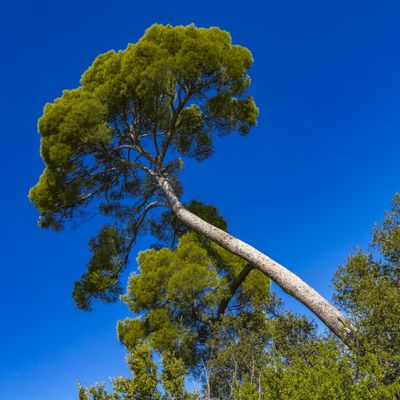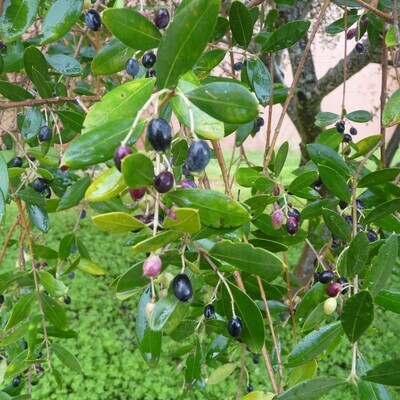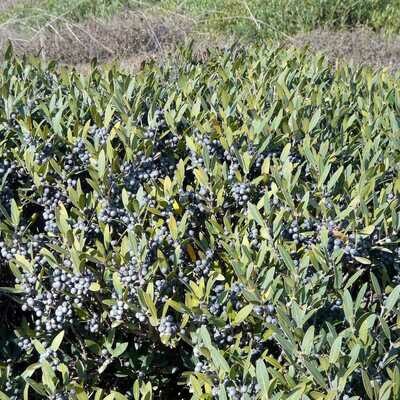jardimseco

Tetraclinis articulata
| Quantity | Price per item | Discount |
| 5 plants | €9,99 | 17% off |
The sandarac tree thrives in hot, dry, subtropical Mediterranean climates and is highly adapted to arid conditions. It grows from sea level up to 1,800 metres, preferring sunny, well-drained locations such as slopes and ravines. It typically grows to a height of 6–15 metres (rarely up to 20 metres) and often has multiple trunks; the form it takes depends largely on the growing conditions. The tree features scale-like leaves arranged in apparent whorls of four, articulated green branchlets and small woody cones with four thick scales. T. articulata exhibits distinct growth forms at different life stages: young trees have a pyramidal or conical crown with flexible, flattened branchlets forming open sprays. As the tree ages, the crown becomes irregular and often flattens out, resembling a cedar. The trunk may be straight or contorted, and older trees develop thick, scaly or exfoliating bark.
We would recommend this tree for any garden without heavy frosts. The open crown and light foliage provide an attractive contrast to other conifers, such as Cupressus. Besides its other attributes, it is fast-growing and blends in well with the Algarvian landscape.
Distribution map showing the range of Tetraclinis articulata

Giovanni Caudullo, CC BY 4.0, via Wikimedia Commons
| Images | Krzysztof Ziarnek, Kenraiz, CC BY-SA 4.0
|
| Krzysztof Ziarnek, Kenraiz, CC BY-SA 4.0
|
Tetraclinis fire resistance and more....
How to use our online shop
-
You can make an order by selecting plants with quantities and putting them in your Shopping Bag.
-
By placing an order you are not obligated to purchase the plants online and you will not be asked for any payment at this stage.
-
We will confirm prices, availability and delivery/collection dates with you by email.
-
Only when all the details of your order are agreed, will we send you an agreed Factura/Invoice and request payment from you.
-
Once an order is agreed we require a 50% payment to secure the plants. Plants in the shopping basket are not reserved until an order is placed.
-
Availability - the store contains 3 availability categories
-
Plants ready for despatch, collection within 14 days
-
Plants we have but they are still growing into their containers. These are offered for reservation and will be released once they are ready. An estimated date for their availability is given.
-
Plants that we only hold a limited stock of, or only propagate occasionally or on demand. This also includes plants we are going to propagate in the near future.
-
Read more on our plant availability and advance orders here



